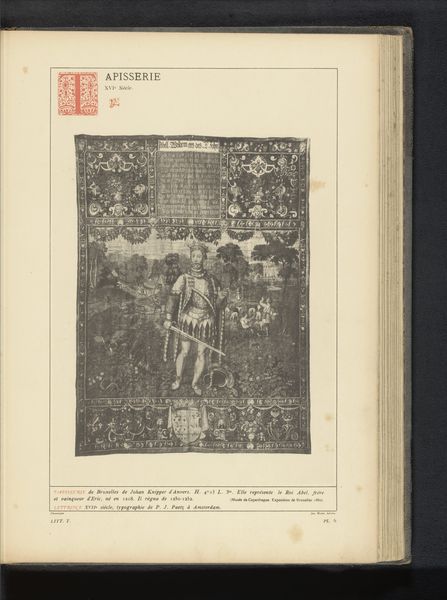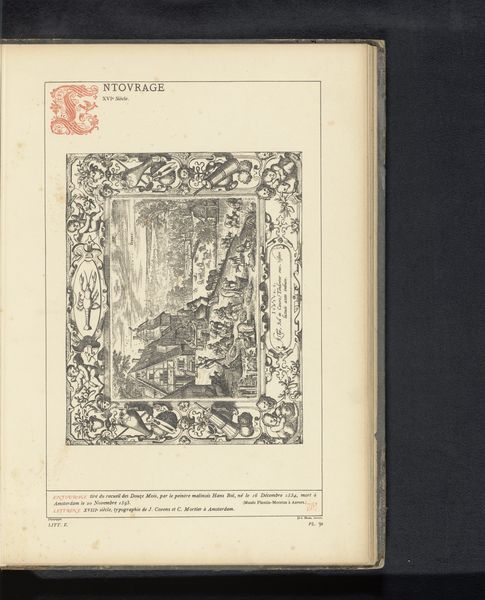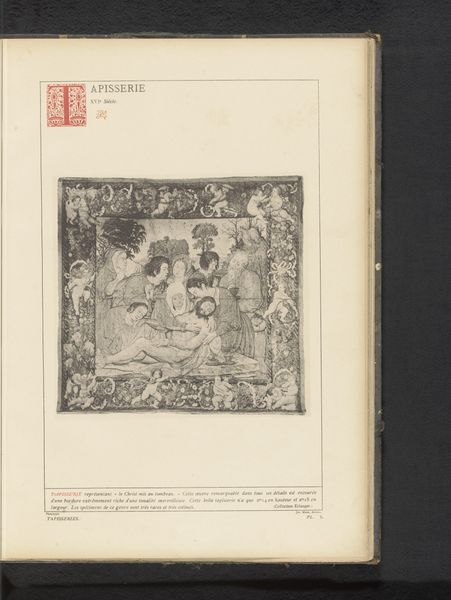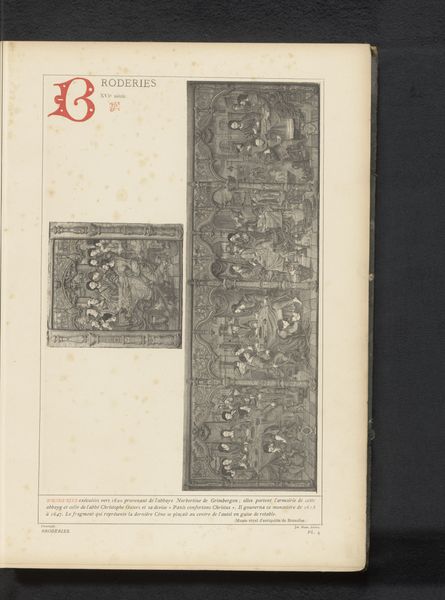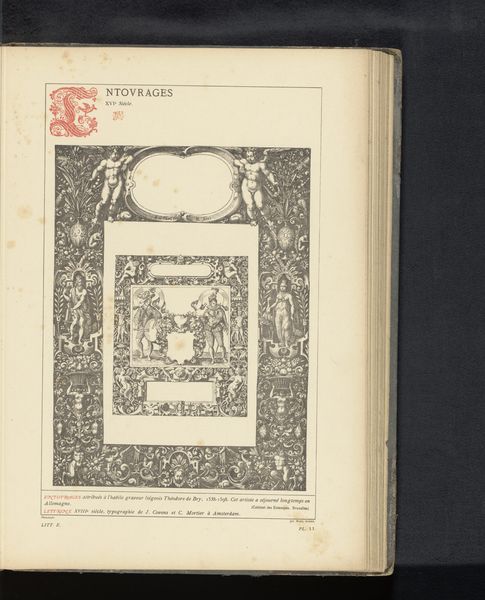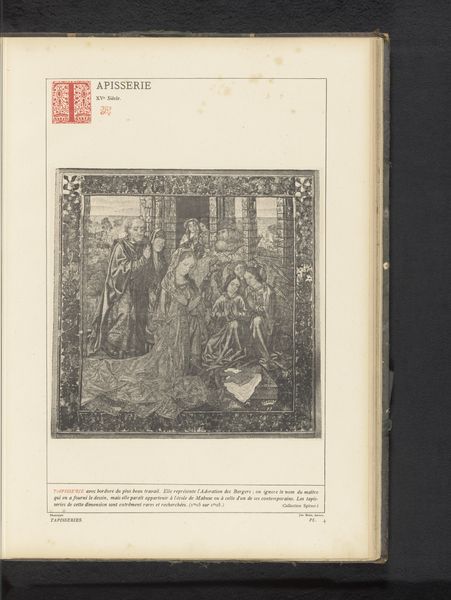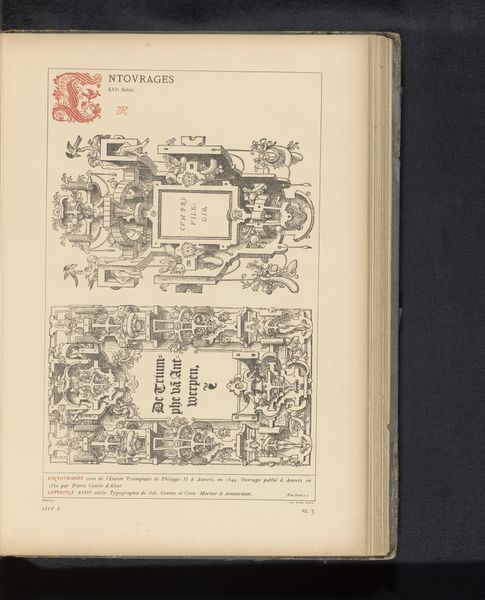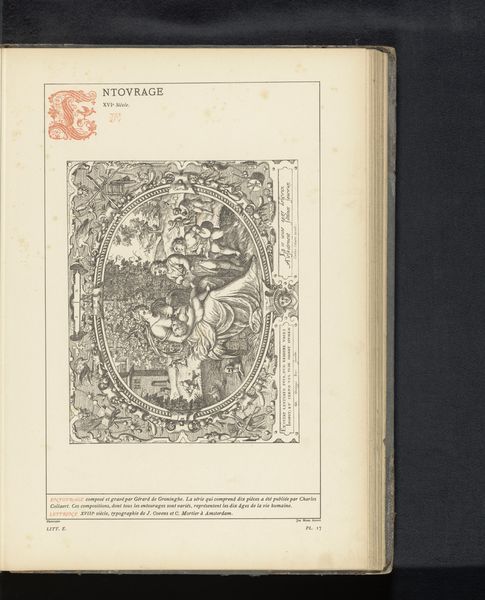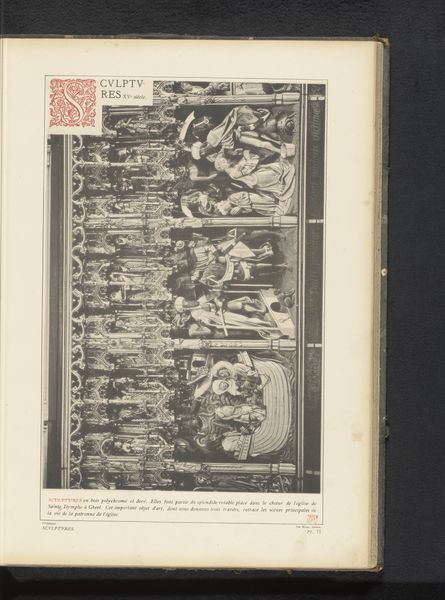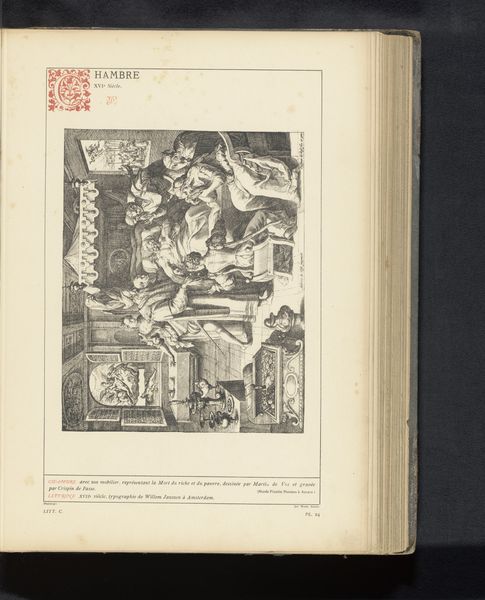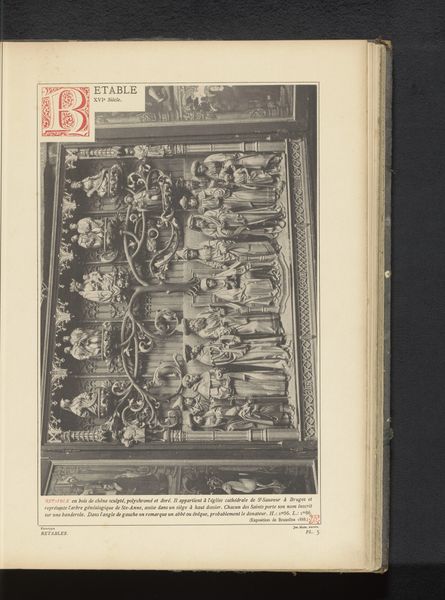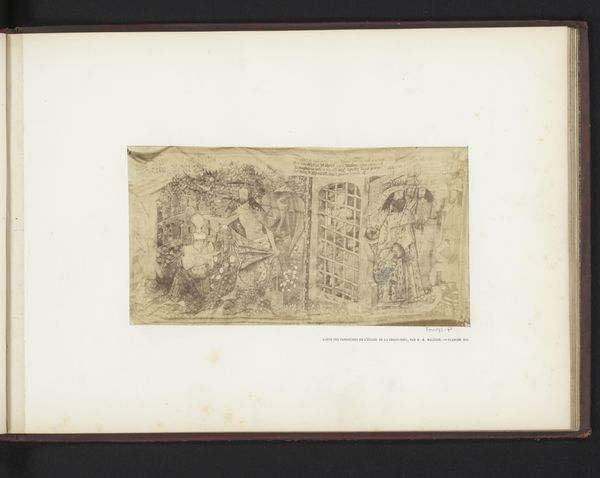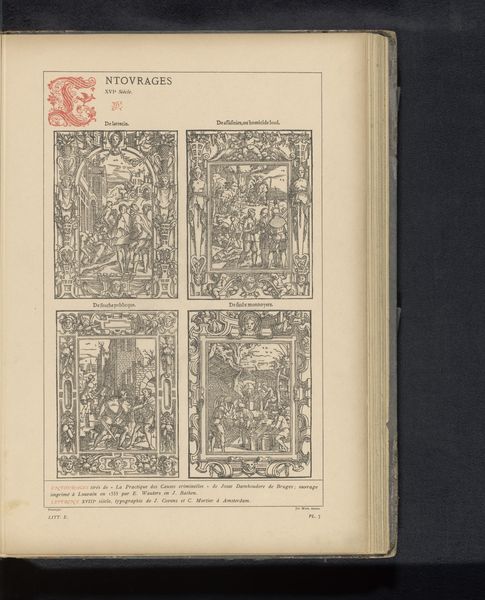
print, textile, engraving
#
narrative-art
# print
#
textile
#
11_renaissance
#
history-painting
#
engraving
Dimensions: height 262 mm, width 220 mm
Copyright: Rijks Museum: Open Domain
Editor: Here we have an image of a tapestry, before 1887, with the lengthy title "Wandkleed met verschillende scènes en arabesken," which translates to "Tapestry with various scenes and arabesques." It’s hard to tell exactly from this image, but it seems like the original work was rendered in textile. The monochrome aesthetic evokes a sense of age. What stands out to you? Curator: Initially, I'm drawn to the structural composition itself. The central scene, seemingly depicting a hunt, is framed by an elaborate border filled with repeating patterns and figures. Notice how the engraver uses hatching and cross-hatching to create tonal variations, mimicking the depth and texture of the original textile. Editor: I see what you mean. The contrast between the densely packed border and the slightly more open central scene creates a visual hierarchy. What about the "arabesques" mentioned in the title? Curator: Those are evident in the intricate, flowing patterns that populate the border. They add a layer of visual complexity, guiding the eye around the composition. It's a study in contrasting textures and forms; consider how the static nature of the print medium transforms a presumably colorful and pliable woven textile into a graphic composition emphasizing line and form. It creates a new, distinct aesthetic experience from its source. Editor: That’s a good point. It really forces you to focus on the lines and shapes, devoid of any color distractions. I initially viewed it as a straightforward reproduction, but I appreciate the value of its lines as a work on paper now. Curator: Precisely. Through rigorous adherence to the medium’s constraints, a print attains aesthetic autonomy distinct from the original model. It also demands the viewer engage more intimately with compositional arrangements rather than focusing solely on subject representation. It emphasizes the work's unique artistic qualities rather than its potential narrative. Editor: It is fascinating how focusing on composition brings out another layer of this tapestry!
Comments
No comments
Be the first to comment and join the conversation on the ultimate creative platform.

